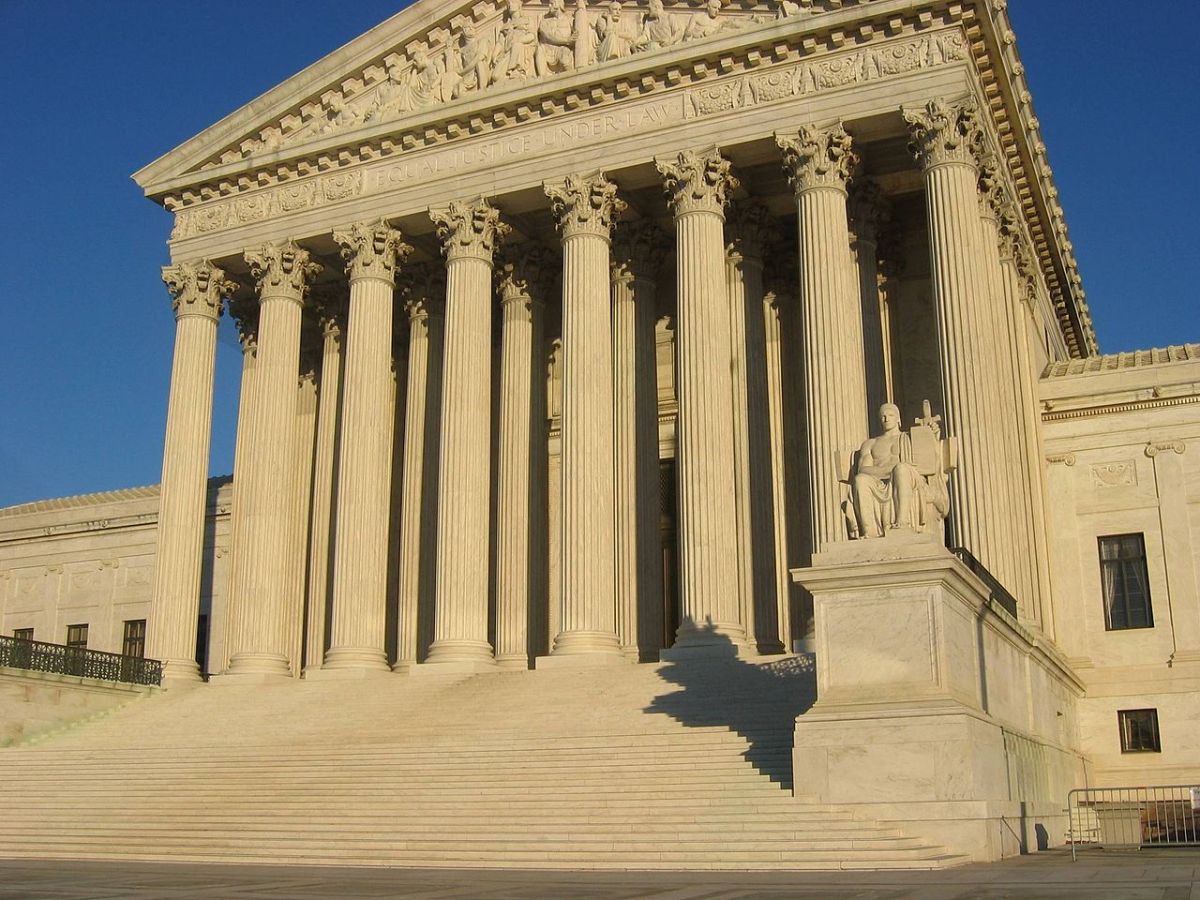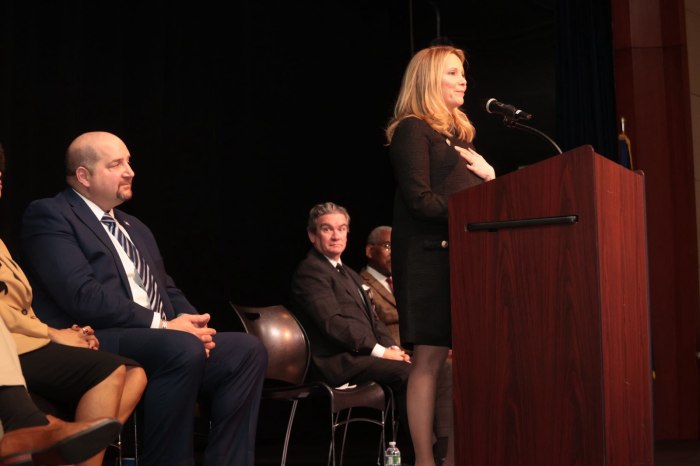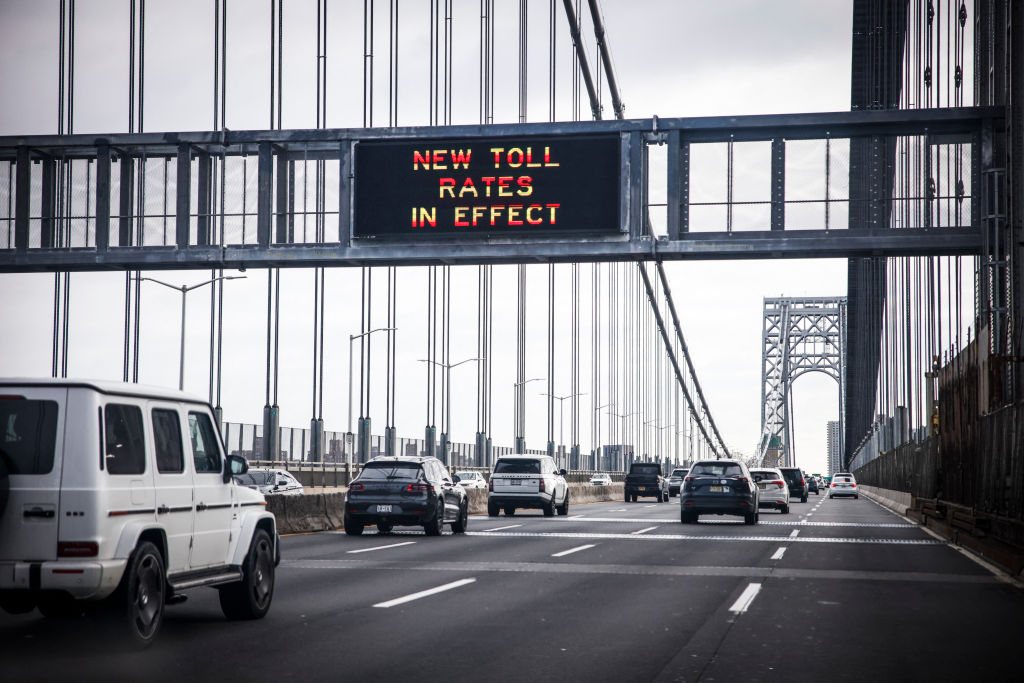By Nina Martin ProPublica
Everyone considers Roe v. Wade, the 1973 decision that established a woman’s right to an abortion, to be the most important ruling ever on the issue by the Supreme Court. But this year, a lesser-known progeny of Roe occupies center stage in potentially the most momentous abortion case confronting the justices in a generation. After Roe established abortion rights, Planned Parenthood v. Casey reined them in, creating a new legal standard that gave states greater leeway to regulate the procedure. Many conservative legislatures took advantage to enact a series of increasingly tough laws that reproductive rights advocates argue have made it more difficult — and sometimes impossible — for women to obtain abortions.
One of those states was Texas, which in 2013 enacted H.B. 2, an omnibus bill whose multiple provisions include restrictions, known as TRAP laws, targeting abortion providers. Now the Supreme Court is being asked to decide the constitutionality of two of these laws — one requiring clinics to meet the same building codes as other types of outpatient surgical centers, the other requiring abortion doctors to have admitting privileges at a hospital within 30 miles — that have already shut down more than half of the state’s 41 clinics and could close 8 more. When the court holds oral arguments in Whole Woman’s Health v. Hellerstedt this week, the signs that protesters wave and the chants they chant will likely focus on Roe, but the outcome of the case will hinge on how justices interpret PP v. Casey.
Abortion rights advocates contend the Texas rules are “sham” laws that pretend to protect women’s health while erecting so many hurdles — what PP v. Casey calls an “undue burden” — that abortion becomes “an abstract right that doesn’t have any meaning,” in the words of Stephanie Toti, a Center for Reproductive Rights attorney representing the clinics. Abortion foes insist that TRAP laws have a genuine medical purpose. They want the court to abandon the “undue burden” standard and allow lawmakers to pass abortion regulations as long as they have a “rational basis,” without having to prove that the laws actually benefit women. If the court goes along, it could have a sweeping impact on access to abortion across the country, but especially in conservative states in the South and Midwest, triggering not just a new wave of TRAP laws but other types of restrictions as well.
PP v. Casey was decided in 1992, a time of many political parallels to today. Here is the background to the most important abortion decision you may never have heard about.
The Rise of Incrementalism
In the period immediately following Roe, abortion opponents mobilized and pushed for a federal constitutional amendment declaring that a fetus was a “person” entitled to “equal protection” under the 14th Amendment. But those efforts stalled. Abortion opponents began arguing for a new, pragmatic strategy known as “incrementalism.” Instead of attempting to overturn Roe outright, “you would argue that certain abortion restrictions and regulations were compatible with Roe,” said Mary Ziegler, a law professor at Florida State University and author of “After Roe: The Lost History of the Abortion Debate”. The idea was “to chip away at abortion rights until Roe was so incoherent and so full of holes that courts would finally get rid of it.”
The approach required “an accurate understanding of political power, an assessment of what is politically achievable, [and] recognition of the imperfect world in which we live,” Clarke Forsythe, senior counsel for Americans United for Life, a key of architect of anti-abortion strategies, wrote in a law review article around that time. That translated into retail politics on the state level, the election of anti-abortion candidates, the passage of model legislation and the defense of those new laws in court. The approach was extremely effective: By the late 1980s, states had enacted dozens of restrictions. Moreover, the political makeup of the Supreme Court had turned more conservative, and the court’s jurisprudence on abortion had become splintered and, to some, confused. Forsythe, though, could read the tea leaves: The justices seemed ready to show “greater deference to state abortion laws — quite a contrast from the Roe decision.”
The Pennsylvania Law
The battles over the Pennsylvania Abortion Control Act were a prime example of incrementalism in action. A version of the law passed in 1982 was largely struck down by the U.S. Supreme Court four years later. But instead of giving up on the law, legislators amended it; the version signed by Gov. Robert Casey Sr. in 1989 included a 24-hour waiting period, informed consent rules for women seeking abortions, parental consent rules for minors and a requirement that married women notify their husbands before terminating a pregnancy. Planned Parenthood and other abortion providers challenged these rules, too. But this time, the Third U.S. Circuit Court of Appeals upheld all the provisions except spousal notification. Planned Parenthood appealed the case to the high court.
Another Nasty Fight for the Supreme Court
Consider the events of 1991–1992. A presidential election loomed; the first war in Iraq was over; racial unrest after the acquittal of four white police officers in the videotaped beating of Rodney King left Los Angeles in flames. Massive job layoffs led to widespread economic resentment, and a blunt-talking billionaire emerged out of nowhere to become a populist hero and presidential spoiler (this one’s name was Ross Perot). On the abortion front, groups such as Operation Rescue were using aggressive, sometimes violent tactics to block access to abortion clinics. Then, in June 1991, an ailing Justice Thurgood Marshall resigned, touching off an epically ugly Supreme Court fight (although the one to replace Justice Antonin Scalia could make it seem like a model of decorum).
Clarence Thomas’s confirmation in October 1991 meant Republican appointees now clearly held the fate of abortion rights in their hands. “Our concern was that when the [Pennsylvania] case went before the Supreme Court, the majority would use this opportunity to go much further [than the Third Circuit appeals court] and say that any law that was rational, including the complete banning of abortion, would be constitutional,” said Kathryn Kolbert, the lead ACLU attorney challenging the Pennsylvania law, who is now director of the Athena Center for Leadership Studies at Barnard College. That was what many abortion opponents were urging: Indeed, they had been lobbying for the “rational basis” standard since Roe.
Figuring that they were going to lose anyway, Kolbert and her allies embarked on what author and legal analyst Jeffrey Toobin has called “one of the most audacious litigation strategies in Supreme Court history.” Instead of dragging the case out, they opted to “lose fast”: to push the case onto an exceptionally fast track in the hope it would be decided in the middle of the 1992 elections. And instead of making it a fight about Pennsylvania’s incremental law, they cast it as the ultimate showdown over Roe. This would let them take political advantage of the backlash that would ensue if abortion rights were gutted. According to Toobin, the conservative chief justice, William Rehnquist, resented this “transparent” ploy, but the court’s two liberal justices, Roe‘s author Harry Blackmun and John Paul Stevens, supported it and Rehnquist’s hand was forced. The case was argued on the last possible day of the 1991–92 term.
Justice Kennedy’s Compromise
A central question facing the justices was whether the state could comply with Roe v. Wade while requiring women to go through additional hoops before getting an abortion. Oral arguments left both sides convinced that abortion rights were in peril; when Blackmun’s papers became public years later, they showed that Rehnquist had drafted an opinion overruling Roe. But then the trio of Republican-appointed moderates — Anthony Kennedy, Sandra Day O’Connor and David Souter — had second thoughts. Instead of joining Rehnquist, they made a secret deal to thwart him.
The PP v. Casey decision, announced in June 1992, was stunning. By a 5–4 vote, the court reaffirmed Roe‘s “essential holding” that the right to abortion was protected by the Constitution. Not only that, the opinion embraced women’s equality as central to the abortion right in a way that Roe had not. With abortion, the liberty of the woman is at stake “in a sense unique to the human condition and so unique to the law,” the decision read. “Her suffering is too intimate and personal for the State to insist … upon its own vision of the woman’s role, however dominant that vision has been in the course of our history and of our culture.”
The structure of the ruling was also highly unusual: It was a “plurality” opinion by the three moderates — Kennedy, O’Connor and Souter — with the court’s two liberals agreeing with some parts and disagreeing with others. Kolbert notes that the plurality’s emphasis on “stare decisis,” the principle that courts must follow precedent, was a sign that the justices had understood “the challenge to the institutional integrity of the court was real.” Justice Kennedy in particular “did not want the court to be perceived as changing course” on abortion, Kolbert said, simply because the majority’s ideological balance had shifted.
But abortion foes like Paul Linton, later special counsel to the Thomas More Society, noted that a “moral ambiguity” about abortion pervaded the joint opinion, as well as “the nagging sense” that the three justices thought Roe had been wrongly decided but upheld it anyway: “That … does not promote respect for the judiciary, especially in a case where the stakes were so high.” Abortion opponents felt especially betrayed by Kennedy, a dismay that has only grown deeper over the years, as he has authored landmark opinions on gay rights and marriage equality. That’s one reason conservative expectations for the Texas abortion case are much more cautious today than they were for Casey. Kennedy “doesn’t have any clearly defined principles that allow you to predict what he’s going to do in any case, in any area,” said Lynn Wardle, a law professor at Brigham Young University who has written often about same-sex marriage and abortion. “The best test for being able to predict what he will do is to lick your finger and hold it out to the wind.”
A Clouded Victory for Abortion Rights
Even as PP v. Casey upheld the right to abortion, the plurality opinion took Roe v. Wade apart, starting with its foundation, the trimester framework. Under Roe, states were almost completely banned from regulating abortion during the first trimester. They had more flexibility to pass laws protecting a woman’s health in the second trimester, and they could prohibit most abortions in the third. In contrast, Casey declared, “[T]he State has legitimate interests from the outset of the pregnancy in protecting the health of the woman and the life of the fetus that may become a child.” Instead of the trimester approach, Casey established viability — the point at which the fetus can survive outside the womb — as the new dividing line for determining whether an abortion law was valid or not. (When Roe was decided, fetuses weren’t considered viable until 28 weeks, or the third trimester; by 1992, medical advances had pushed the line to around 24 weeks.) Before viability, Casey said, states could only try to persuade a woman not to have an abortion; laws that made it difficult or impossible for her to act on her decision did not pass muster. After viability, though, states could restrict abortions pretty much however they liked.
More significantly, Casey also rejected Roe‘s “strict scrutiny” test for evaluating abortion restrictions — a test that had stymied most state efforts to regulate the procedure — replacing it with the looser “undue burden” standard, which Justice O’Connor had proposed in dissents to earlier abortion rulings. An undue burden was defined as any law that had “the purpose or effect of placing a substantial obstacle in the path of a woman seeking an abortion.” Importantly for the pending Texas abortion case, this reasoning applied to medical rules as well as other restrictions: Although “the State may enact regulations to further the health or safety of a woman seeking an abortion,” the court held, “unnecessary health regulations that have the purpose or effect of presenting a substantial obstacle to a woman seeking an abortion impose an undue burden.” Still, the court reiterated, just because a law had “the incidental effect of making it more difficult or more expensive to procure an abortion” wasn’t enough to invalidate it.
Under the new standard, the Pennsylvania rules aimed at giving women more information and time to reflect on their decisions were valid. Only the spousal notification provision was deemed to be an undue burden and thus unconstitutional: “A state may not give to a man the kind of dominion over his wife that parents exercise over their children.”
Scalia’s Dissent: “Hopelessly Unworkable”
Casey prompted one of Antonin Scalia’s most famous and blistering dissents: The plurality’s reasoning, he fumed, was “really more than one should have to bear.” Much as he disliked Roe, at least the trimester framework laid down clear guidelines, he wrote. In contrast, Casey‘s “undue burden” standard was “created largely out of whole cloth,” “inherently manipulable,” and “hopelessly unworkable,” giving individual judges much more power to inject their own private beliefs into the abortion debate. “Its authors believe they are bringing to an end a troublesome era in the history of our Nation and of our Court,” Scalia scoffed. But he said the abortion wars would only be stoked by “this jurisprudence of confusion” — a view that would help frame the conversation about Casey for the next two decades. More recently, abortion rights advocates have fought back, arguing that Casey‘s reputation as “squishy law” is undeserved and part of a long effort to delegitimitize the undue burden standard, much as critics have sought to undermine Roe. “Excuse me for simplifying, but there’s a there there,” said Reva Siegel, a Yale Law professor who has written extensively on abortion and gender equity. One reason Casey may be so misunderstood: It gave each side half a loaf, so neither embraced it, even though it reflected how most ordinary people felt. The decision “speaks to an America divided by conflict over abortion,” Siegel said. “It’s summoning each side to engage respectfully with the other.”
Reshaping the Debate: “Partial Birth”
The 18 months or so immediately following Casey “were probably a low point in the history of the pro-life movement,” said Michael New, a conservative pundit and visiting assistant professor at Ave Maria University who has written often about abortion. At first most new restrictions introduced in the states were modeled closely on the Pennsylvania law. Then abortion opponents hit upon the mid–1990s version of last year’s Planned Parenthood videos: the rare but gruesome technique for third-trimester abortions that they dubbed “partial-birth abortion.”A flurry of bans on the procedure re-energized the incrementalists, providing new opportunities “to slowly convince [average] Americans that they’re just as uncomfortable about abortion as pro-life folks are,” Jack Balkin, a professor of constitutional law at Yale University, told PBS’ Frontline in 2005. That meant more chances to challenge not just Roe, but also Casey. Said Forsythe, of Americans United for Life: “The procedure served to humanize the unborn and produced a sea change in American public opinion on the issue.”
Ultimately, it was the sea change on the Supreme Court during the administration of George W. Bush that mattered most. In 2007, the court upheld the federal ban on partial-birth abortion; Kennedy wrote the majority opinion using language suggesting he might be open to tighter abortion restrictions despite the undue burden standard, especially in areas of “medical uncertainty.” Abortion, he said, was “a decision … fraught with emotional consequence,” one in which women would “struggle with grief more anguished and sorrow more profound” if they really understood what this particular procedure involved. Conservative strategists saw the ruling as a victory not just against partial-birth abortion but against Casey.
How Big a Burden?
It took the huge Tea Party wave of 2010 for abortion opponents to gain the political clout to push through laws like Texas’ H.B. 2. Since 2011, states in the South and Midwest have passed more than 300 abortion restrictions — TRAP laws, rules for how medication abortions may be performed, bans on abortion after 20 weeks (and sometimes earlier), longer waiting periods and greater impediments to teenagers seeking abortions without parental approval. The central question raised by many of these laws goes directly to the 24-year-old ruling in Casey: How undue must a restriction become before it renders the right to abortion meaningless?
Even before Scalia’s death, the outcome of the Texas case was anyone’s guess; his demise makes it even more uncertain. The biggest question has always been whether Kennedy, the last remaining PP v. Casey co-author on the Supreme Court, will see that decision as an important part of his legacy that he wants to defend, or whether he will be inclined to give states more leeway to restrict the abortion right.
As Casey itself shows, all kinds of court alliances and plurality rulings are possible.
What is clear: The Texas case, whatever its outcome, probably won’t settle the abortion issue any more than Casey did.
ProPublica is a Pulitzer Prize-winning investigative newsroom. Sign up for their newsletter.
(Featured photo credit: Duncan Lock/Wikimedia Commons)

































